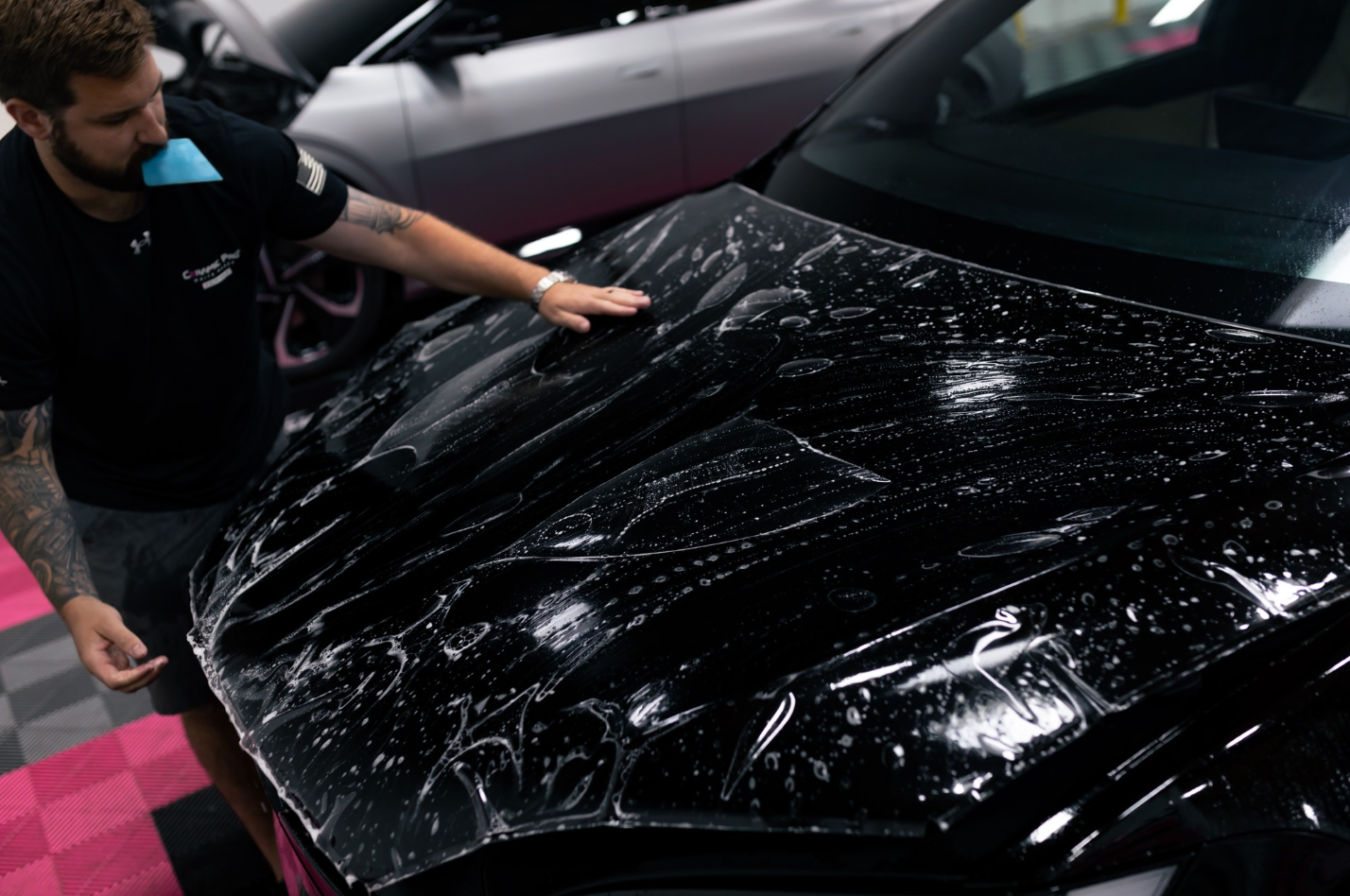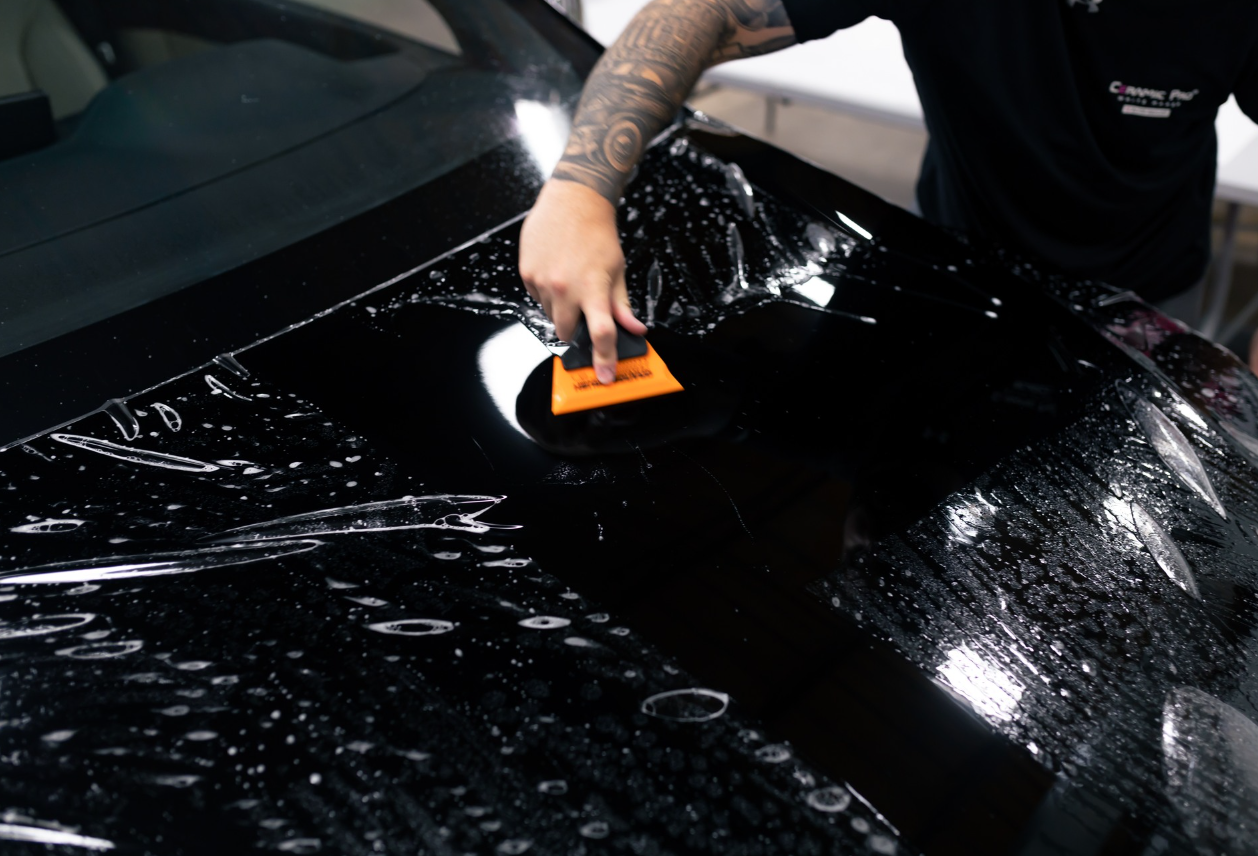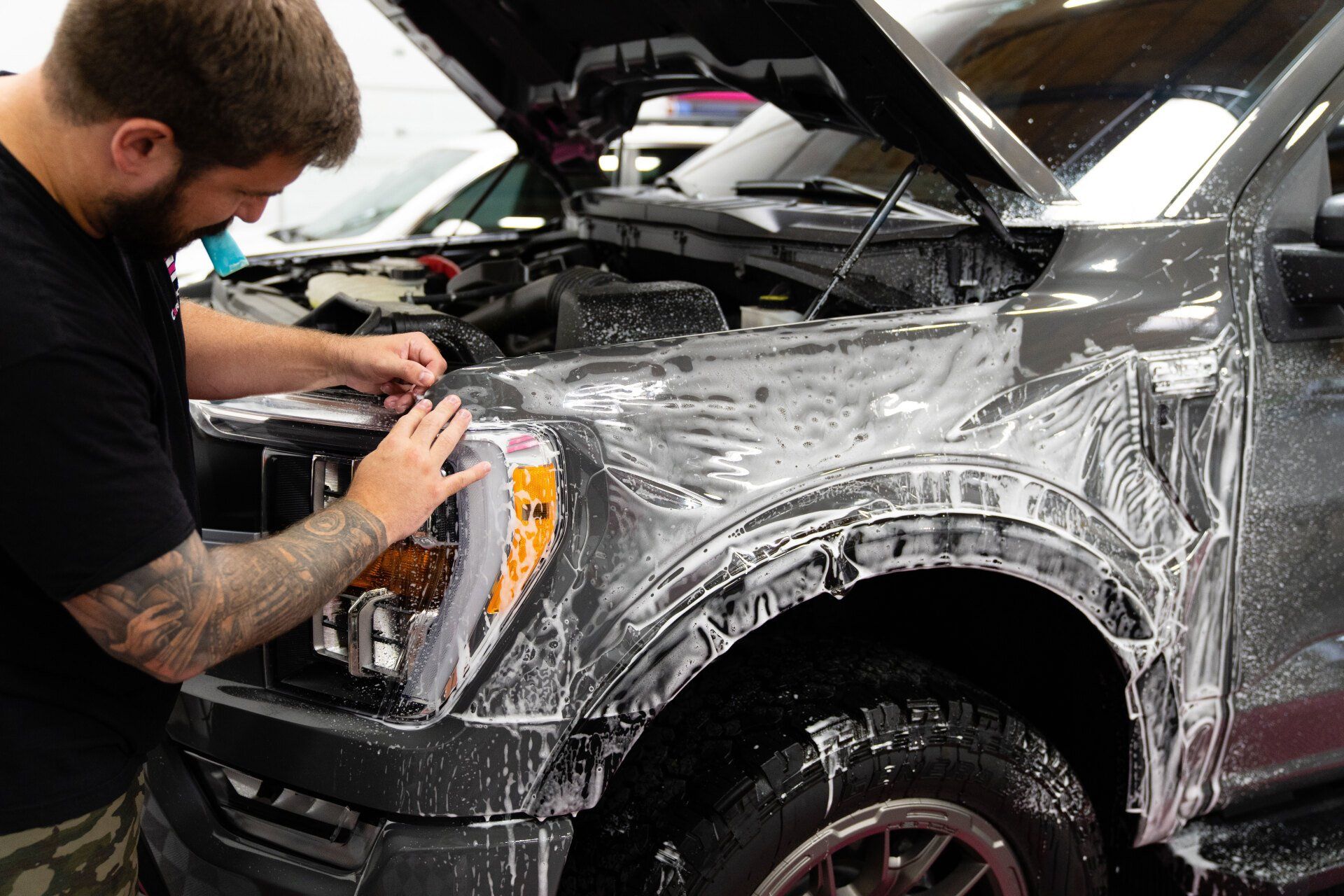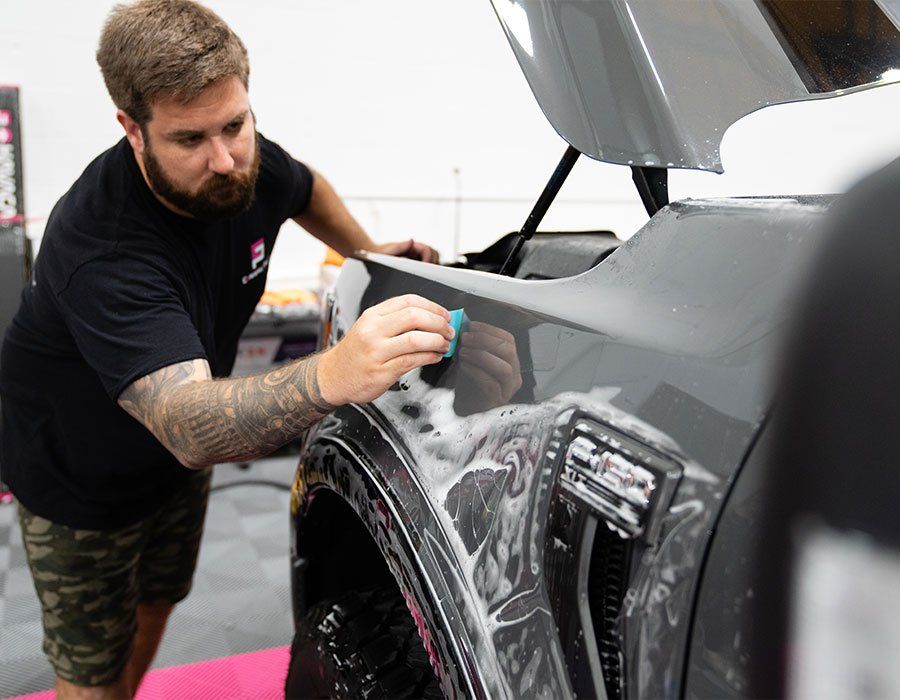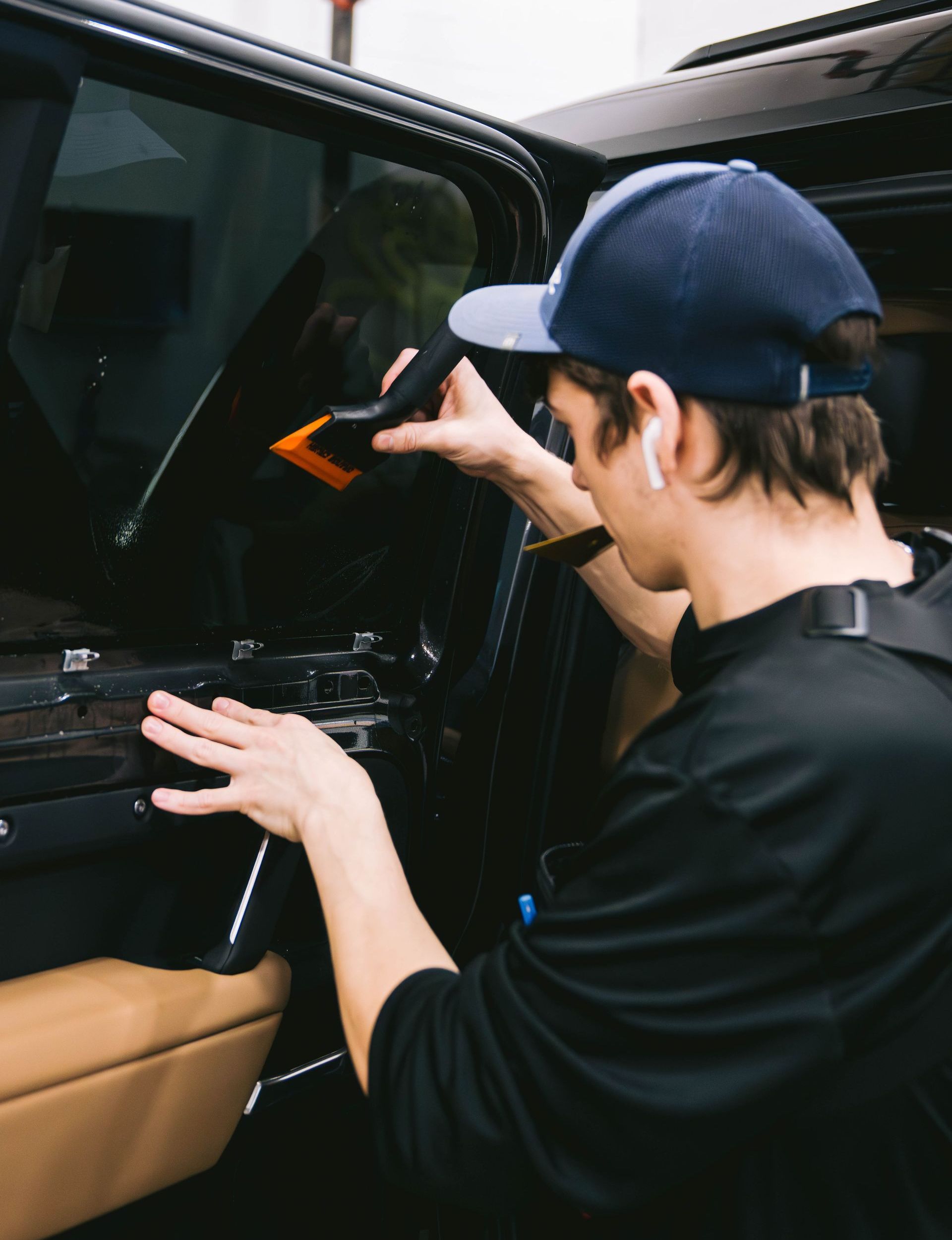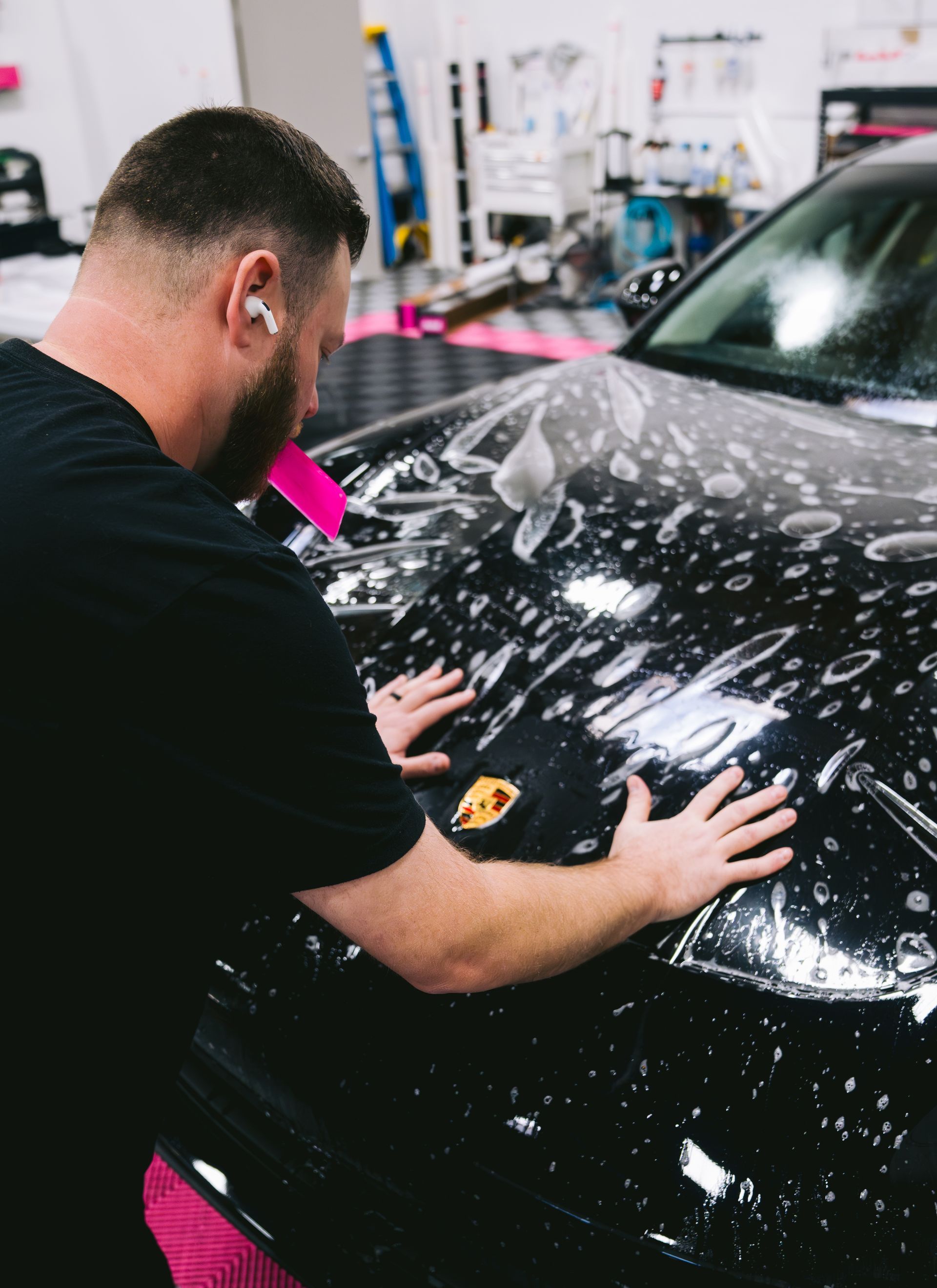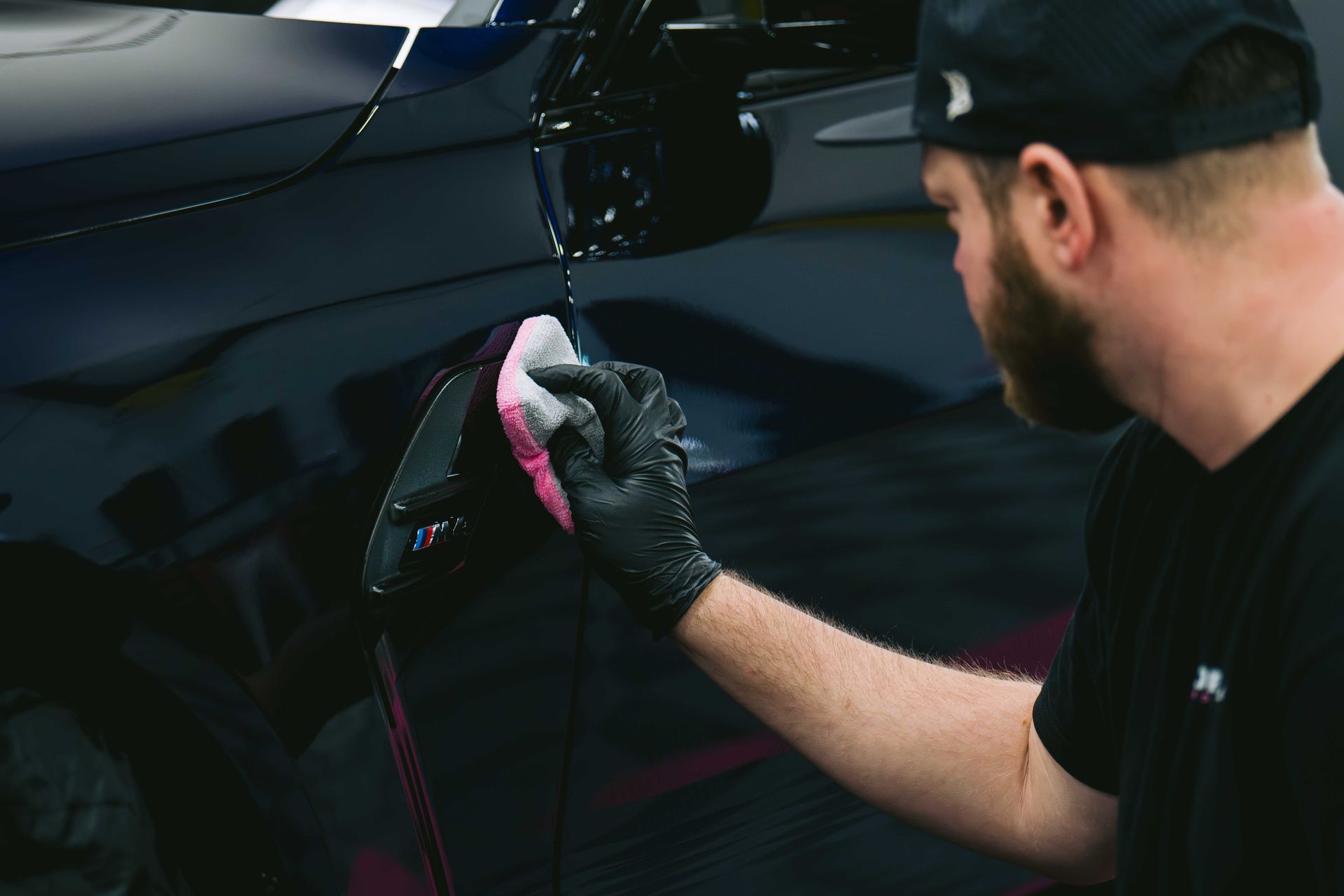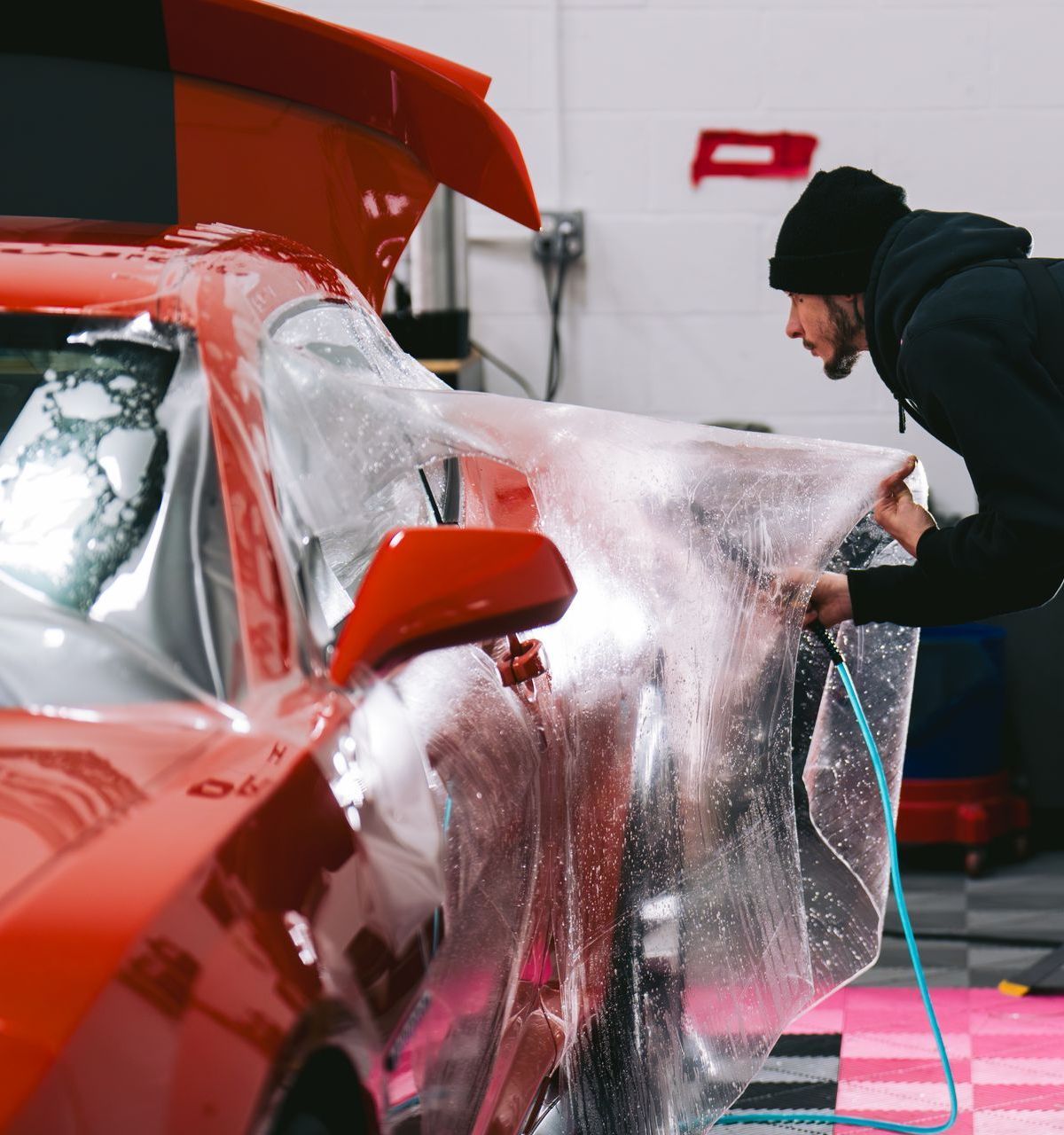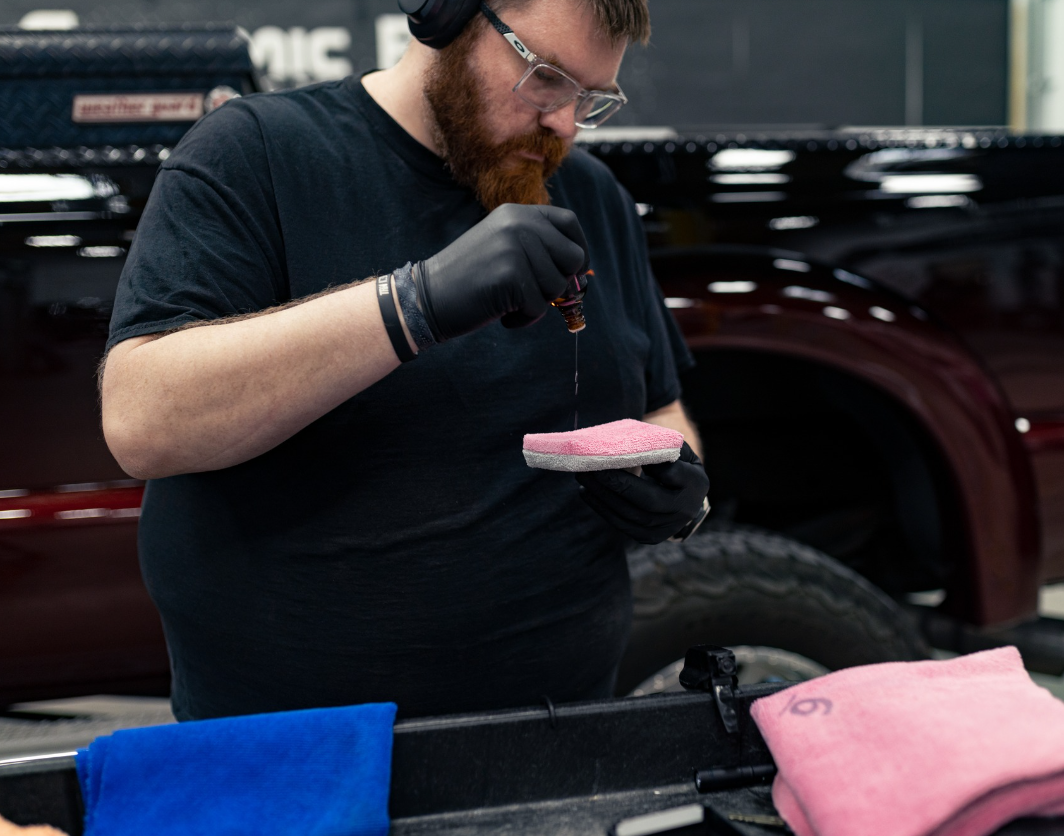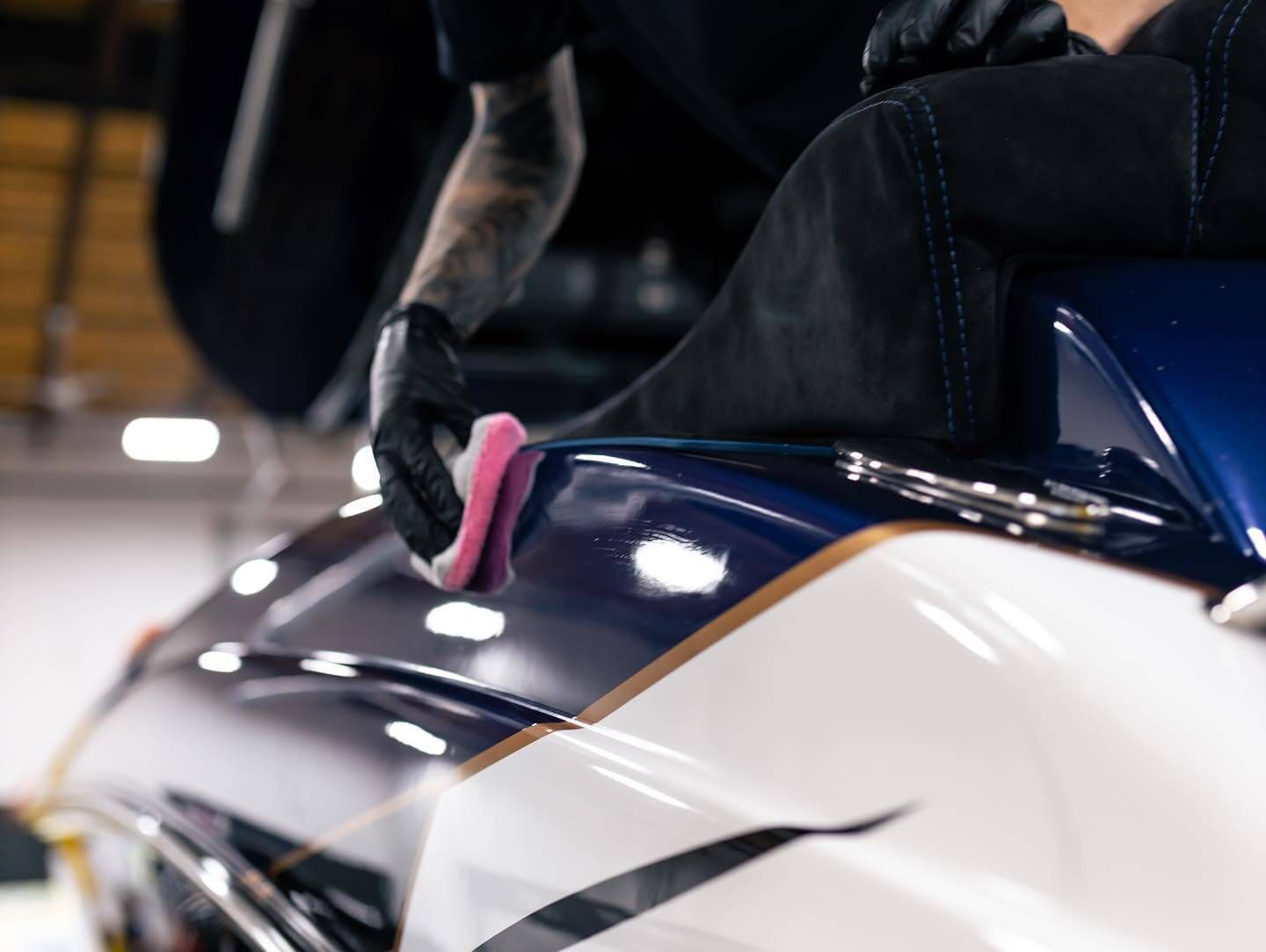Debunking Common Misconceptions About Paint Protection Film: Unveiling the Truths
Many believe that a paint protection film is hard to use, breaks in the sun, and harms car paint. These thoughts are stale leftovers from old days. Today's paint protection films are simple to apply, stay firm under the sun and keep your car's color safe. On top of that, applying wax to PPF is not only possible but also adds extra safety against dirt and light harm.
One common misconception is that paint protection films crack in the sun, but modern PPFs are designed to resist cracking and discoloration. Another myth is that PPF might damage your car; however, it only adheres to the exterior and can be safely removed without affecting the paint. It's essential to choose high-quality paint protection films to ensure they are invisible and provide effective protection against minor scratches, scuffs, and debris. The secret is to choose PPFs of high quality that come with clear installation instructions and support.
Debunking Misconceptions About Paint Protection Film
Paint protection film has certainly advanced in technology and application over the years. However, many myths surround its use, discouraging car owners from considering it for their vehicles. Let's unveil the truth behind these misconceptions. One prevalent misconception is that a paint protection film is difficult to install. This was indeed true in the past, but advancements in PPF technology have made it much easier to install. Professional installation is recommended, but modern clear bras are designed to be more user-friendly for both professionals and DIY enthusiasts. The secret is to choose PPFs of high quality that come with clear installation instructions and support.
Another common myth suggests that PPF films crack or discolor upon exposure to the sun. This was a valid concern with older generations of paint protection film, but modern formulations are engineered to resist cracking and discoloration even under prolonged exposure to sunlight. Investing in a high-quality, UV-resistant PPF ensures that your vehicle's paint remains protected without sacrificing its appearance. It's crucial to address these myths, as they prevent car owners from fully understanding the benefits of clear bras and may lead them to dismiss this valuable protective measure for their vehicles. By debunking these misconceptions and shedding light on technological advancements in PPF, more car owners can make informed decisions about safeguarding their vehicle's paintwork.
The Truth: Value of Waxing with Paint Protection Film
Many people believe the myth that adding wax to a PPF layer is unnecessary or even detrimental. It's often assumed that since PPF is already a protective layer, adding wax would be redundant or harmful. However, this couldn't be further from the truth. The reality is that waxing actually enhances the performance of the film, acting as an additional barrier against environmental contaminants, UV exposure, and physical damage. So, let's explore the benefits of combining wax with paint protection film and how it contributes to maximizing the protection of your vehicle's paint finish.
Firstly, consider the added layer of protection that wax provides. While PPF serves as a durable shield against minor scratches, scuffs, and debris, wax acts as a secondary defense. It further fortifies the film by preventing dirt and other harmful elements from adhering to the surface of your vehicle. This means that when you regularly wax your PPF, you're not only preserving its appearance but also extending its longevity. Adding wax boosts the gloss level of your film. This ensures that your car maintains a sleek and polished look, enhancing its visual appeal while safeguarding the original paint. One significant benefit of applying wax to PPF is the added protection against UV exposure. Modern high-quality waxes offer UV inhibitors that shield the surface from sun damage, thus maintaining the integrity of both the film and underlying paint.
The enhancement in durability is another compelling reason to incorporate regular waxing into your PPF maintenance routine. Regular waxing extends the durability of PPF , reducing wear and tear caused by daily exposure to environmental elements such as rain, sun, and other environmental contaminants. Contrary to popular misconceptions, incorporating wax into your paint protection film maintenance routine enhances protection, prolongs durability, improves gloss levels, and safeguards against UV exposure. By understanding and embracing this valuable practice, car owners can maximize the benefits of a clear bra and ensure long-lasting protection for their vehicle's paint finish.
Influence on Car Color and Appearance
When it comes to preserving the illustrious appearance of your vehicle, the influence of paint protection film cannot be overstated. PPF is available in both invisible and colored options, designed to match the car's color while safeguarding its paint from various external elements. This two-pronged approach not only ensures that the vehicle's paint remains untouched but also maintains its visual appeal. In essence, a paint protection film acts as an invisible shield, repelling scratches and preserving the original vibrancy of the car's color. Just picture a perfectly polished car gleaming under the sun. The application of PPF completes this picturesque vision by safeguarding the car's paint from elements that would otherwise dull its luster. This protective film acts as a guardian, ensuring that dirt, debris, and minor abrasions are kept at bay, retaining the car's stunning appearance for much longer.
Consider the scenario of a glossy red sports car: without PPF, every small scratch or chip would mar its vibrant facade. However, with the seamless integration of a paint protection film, the car’s striking red hue is not only preserved but enhanced, maintaining that "fresh off the assembly line" look. In fact, many PPF providers showcase before-and-after images on their websites, highlighting the transformative impact of this film on a variety of vehicles. These visual stories provide meaningful evidence of how PPF enhances and safeguards a car’s aesthetic appeal. It's important to consider the emotional impact as well. For many car enthusiasts, their vehicle is a source of pride and joy. Knowing that their prized possession retains its original appeal despite regular use and exposure to the elements can significantly enhance their ownership experience.
PPF, UV, and Weather Resistance
The main objective of UV resistance is to prevent the sun's rays from harming or discoloring your car's paint. It's like sunscreen for your car. High-quality paint protection film undergoes rigorous testing to withstand the sun's ultraviolet radiation without breaking down or losing its protective properties.
- Testing for UV Resistance: Paint protection film undergoes testing in specialized chambers, where it's exposed to intense UV radiation for thousands of hours. These tests simulate years of sun exposure in just a few weeks. Manufacturers use this extreme environment to determine how well PPF will hold up over time and provide reliable protection for your car's paint.
- Weather Resistance: Apart from UV resistance, paint protection film also needs to withstand harsh weather conditions such as rain, snow, and extreme temperatures. With high-quality film, your car's paint is shielded from these environmental factors. Imagine driving through a rainstorm or parking your car outside during a snowstorm. Without the protective layer of PPF, your car's paint would be vulnerable to water damage and fading caused by prolonged exposure to moisture. But with a clear bra, your car stays shielded from these elements.
Examining Quality Differences in PPF Options
When safeguarding your vehicle's paint from road hazards, it's essential to recognize that not all paint protection films are crafted with the same level of quality. Variations in clarity, thickness, and self-healing properties set high-quality paint protection films apart from their lower-quality counterparts, influencing their effectiveness in protecting your vehicle's paint.
One of the primary considerations when evaluating PPF options is clarity. Premium paint protection films offer exceptional clarity, enabling your vehicle's original paint color and finish to shine through without any distortion. Conversely, low-quality films may exhibit a cloudy or yellowish appearance, compromising the visual appeal of your vehicle. Another vital factor to acknowledge is the thickness of the PPF. Thicker films generally provide enhanced protection against rock chips, scratches, and other road debris, prolonging the lifespan of your vehicle's paint. However, it's crucial to find a balance; excessively thick films may pose challenges during installation and might not conform well to complex curves and contours on your vehicle.
Additionally, high-quality clear bras stand out due to their self-healing properties, allowing the film to autonomously "heal" minor scratches and swirl marks when exposed to heat or sunlight. This innovative feature ensures that your vehicle maintains a flawless appearance, as superficial blemishes vanish over time. For example, a superior PPF with exceptional self-healing properties can effectively mend surface imperfections caused by daily wear and tear, preserving your vehicle's exterior despite everyday interactions that would otherwise leave visible marks on unprotected surfaces.
Understanding these quality differences empowers you to make informed decisions when selecting a protective film for your vehicle. For more comprehensive information and comparisons of various paint protection film options, our website offers detailed reviews and guidance, enabling you to choose a PPF that aligns with your specific needs and preferences. By being well-informed about the factors that define PPF quality, you can confidently protect and preserve your vehicle's appearance for years to come. Evaluating the true quality of these protective films is crucial for maintaining the longevity and aesthetic appeal of your vehicle. With this understanding, you're equipped to make an informed decision when choosing the right film for your vehicle.
Unbeatable Paint Protection Film Services in Essex, MD
Transform your vehicle's defense with Detail Solutions, your go-to destination for top-notch paint protection film installation services in Essex, MD. Our skilled team is committed to delivering unparalleled protection against road debris, stone chips, and environmental elements. With meticulous precision, we apply premium PPF to safeguard your car's exterior while preserving its aesthetic appeal. Choose Detail Solutions for superior craftsmanship and a dedication to excellence in paint protection film installation. Ensure your vehicle's longevity and maintain its flawless finish with our top-notch services. Schedule your PPF installation today or call us at (410) 238-3000 and experience the pinnacle of automotive protection in Essex, MD!

